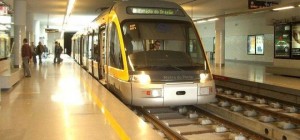By Chittaranjan Tembhekar timesofindia.indiatimes.com
Navi Mumbai is not beaming in its 40th year. Lack of affordable housing, poor transport, growing slum population and encroachment, pollution, and slow infrastructure development are hampering its prospects.
 The state government’s recent white paper on the socio-economic progress of Navi Mumbai says: “Lack of efficient, dependable and speedy public transport linking Mumbai and other cities could be a major impediment in the development of Navi Mumbai.”
The state government’s recent white paper on the socio-economic progress of Navi Mumbai says: “Lack of efficient, dependable and speedy public transport linking Mumbai and other cities could be a major impediment in the development of Navi Mumbai.”
The white paper, Repositioning Navi Mumbai as an Economic Growth Engine, has been prepared by experts constituted by the Maharashtra Economic Development Council (MEDC). It shows that in the last 15 years, affordable housing stock took a dip against costly private housing stock. Today, while there are 122,000 Cidco-constructed houses, there are 218,000 houses which were developed by the private sector.
“Had there been enough low-cost housing by Cidco, real estate prices in the city would have been sufficiently under control for (the benefit of) the common man,” a senior town planner said. “Since Cidco is not taking up enough housing schemes, a nexus of private builders and politicians is exploiting the people. Some people have given up the idea of settling in Navi Mumbai due to skyrocketing real estate prices.”
The paper says the main objective behind creating Navi Mumbai was to absorb Mumbai’s immigrants and also to decongest the state capital. “But public transport, whether the railways or buses, and housing facilities have not kept pace with demand,” the town planner said.
The paper says: “Extremely lengthy land acquisition procedure and a time-consuming legal framework, and a lack of initiative to involve local village populations—which has lead to disputes and agitations regarding compensation—have caused delays, cost overruns and social strife.”
The solution to Navi Mumbai’s woes, the paper suggests, lies in a long-term, comprehensive strategy to achieve affordable housing, speedy transport modes like the Nhava-Sewri trans-harbour link, and the development of the proposed airport, the metro rail, and of water and bus transport.
















